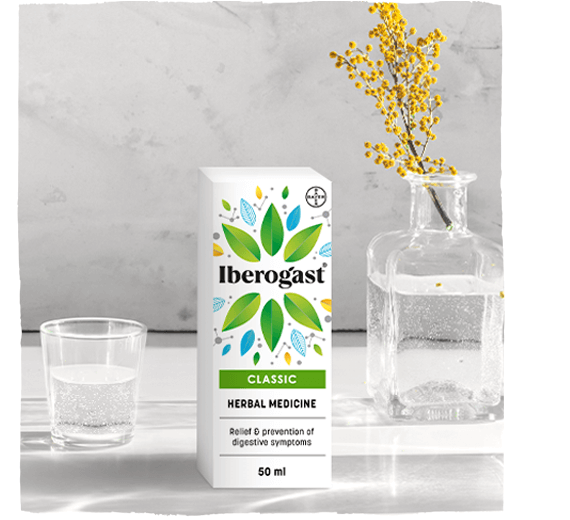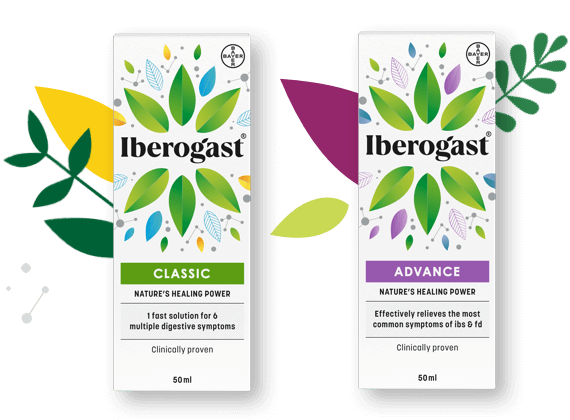Celandine (Chelidonium majus): The natural anti-spasmodic
The healing power of celandine has been known since the Antiquity. In Europe, the plant was known primarily as a remedy for plantar warts (verucca) - and is still used today in various preparations for this purpose. In contrast, the plant was used in traditional Chinese medicine to improve blood circulation. Celandine was also known as Devil’s Milk, due to its acrid milky juice.
Today Chelidonium majus is a component of combinational herbals as its ingredients were shown to relieve spasmodic complaints in the gastrointestinal tract.
In general, the provision of celandine in medicinal preparations is decreasing. In Europe, there are therefore only a few celandine-containing medicines such as Iberogast®.
The power of celandine has been known since the Antiquity. In Europe, the plant was known primarily as a remedy for plantar warts (verucca) - and is still used today in various preparations for this purpose.
The herb originally comes from Central Europe as well as from Asia. Today, celandine is found throughout Europe. Settlers also brought it also to North America.
In Iberogast®, celandine and its contained alkaloids mainly contribute to the activation of the muscle tone in the antrum of the stomach and showed spasmolytic effects in the intestine promoting digestion and relieving cramps.
Furthermore, celandine alkaloids have been described to be antiviral and antimicrobial and showing choleretic and immunomodulatory properties.
In general, the provision of celandine in medicinal preparations is decreasing. In Europe, there are therefore only a few celandine-containing medicines such as Iberogast®.
As a component of combinational herbals like Iberogast it reliefs complaints in the gastrointestinal tract.
Celandine derives from controlled wild areas for pharmaceutical processing. These are largely found in Europe, primarily in Poland and Hungary. Celandine is a naturally occurring plant in these countries and is mainly found in woodland. Celandine is harvested by hand in designated collection regions and transported for processing. The entire biomass above ground is harvested. Celandine is perennial and regrows from the root after cutting, producing offshoots that same year which ensures reproduction of the plant in the long term. Harvesting takes place just once a year, in spring between April and May.
Controlled wild collection means that pesticides and fertilizers of any kind can be avoided.
In the processing plant, the celandine is carefully dried using various methods and then prepared. This guarantees the high quality of the celandine raw material.
Interesting facts about celandine
Did you know, that:
-
The Latin name of celandine goes back to the words "coeli donum" which means heavenly offering?
-
"Chelidonium", the botanical name of celandine, is derived from the Greek word "chelidon" for swallow? Probably because the celandine begins to flower with the arrival of the swallows after winter. In some old tradition it says that the swallows heal their blind young with the juice of the celandine.

-
The herb originally comes from Central Europe as well as from Asia? Today, celandine is found throughout Europe. Settlers also brought it to North America.
-
Celandine grows about 50 centimeters high and prefers residential areas?
-
Chelidonium majus blooms bright yellow from the end of April to September?
-
The plant is clearly identified by the strong smelling, orange-yellow milk juice that comes out of the plant when it is cut off?
-
It belongs to the family of papaveraceae and is related to the poppy?
Get an overview of the medicinal herbs contained in Iberogast®!
The effect of celandine on the gastrointestinal tract
In Iberogast®, celandine mainly contributes to the activation of the muscle tone in the antrum of the stomach1,2. Its components bind to serotonin receptors and show spasmolytic effects in the intestine3,4.
Furthermore, the extracts of celandine in Iberogast®, like all the herbs it contains, can fend off free radicals.
Most of the anti-spasmodic properties of celandine are attributed to the contained alkaloids, which promote digestion, relieve cramps and have anti-inflammatory effects. Furthermore, alkaloids are considered to be antiviral, antimicrobial and anti-tumorous. Additionally analgesic, choleretic and immunomodulatory properties have been described5.
Alkaloids are nitrogen-containing compounds that protect plants from diseases and, due to their mostly bitter taste, from predators. They are also found naturally in tomatoes, eggplants, goji berries and various teas.
The recommended daily dose of Iberogast® contains a significantly low (0.3 milligrams) amount of these substances.
At a glance: This is how celandine works in Iberogast®
The following table shows the different active contributions of celandine in Iberogast®:
| Active benefits of celandine in the frame of irritable stomach | |
| Activation of the musculature in the lower stomach | |
| Relaxation of the musculature in the upper stomach | |
| Anti-inflammatory | |
| Regulation of acid production | |
| Protection of the mucosa |
Legend:
| High impact | |
| Medium impact | |
| Light impact |
The below video is an example only. Please localize the videos in the content packages (can be found on eDAM) and here with your local market Vimeo/YouTube links
This is a sample video only. Please replace with your own local country Vimeo/YouTube videos.
Buy Iberogast® prescription-free from your pharmacy.
Get the power of nature into your home!

Abdel-Aziz, H., O. Kelber, G. Lorkowski and M. Storr “Evaluating the Multitarget Effects of Combinations through Multistep Clustering of Pharmacological Data: the Example of the Commercial Preparation Iberogast.” Planta Med, 2017. 83(14/15): 1130–1140.
Hohenester, B., A. Rühl, O. Kelber and M. Schemann “The herbal preparation STW5 (lberogast) has potent and region-specific effects on gastric motility.” Neurogastroenterol Motil, 2004. 16(6): 765–773.
Simmen, U., O. Kelber, S. N. Okpanyi, R. Jaeggi, B. Bueter and D. Weiser “Binding of STW 5 (Iberogast®) and its components to intestinal 5-HT, muscarinic M3, and opioid receptors.” Phytomedicine, 2006. 13: 51–55
Sibaev, A., H. Abdel-Aziz, O. Kelber, H. D. Allescher and M. Storr “Mechanism of action of STW 5 and its components on motility and intestinal neurotransmission in “in vitro” model of the human colon.” Neurogastroenterol Motil, 2015. 27 (Suppl. 2): 101.
European Medicines Agency: EMA/HMPC/369801/2009 – “Assessment report on Chelidonium majus L., herba.” Published 13 September 2011. Available from: https://www.ema.europa.eu/documents/herbal-report/final-assessment-report-chelidonium-majus-l-herba_en.pdf.
Herba Chelidonii, WHO monograph 2010.








